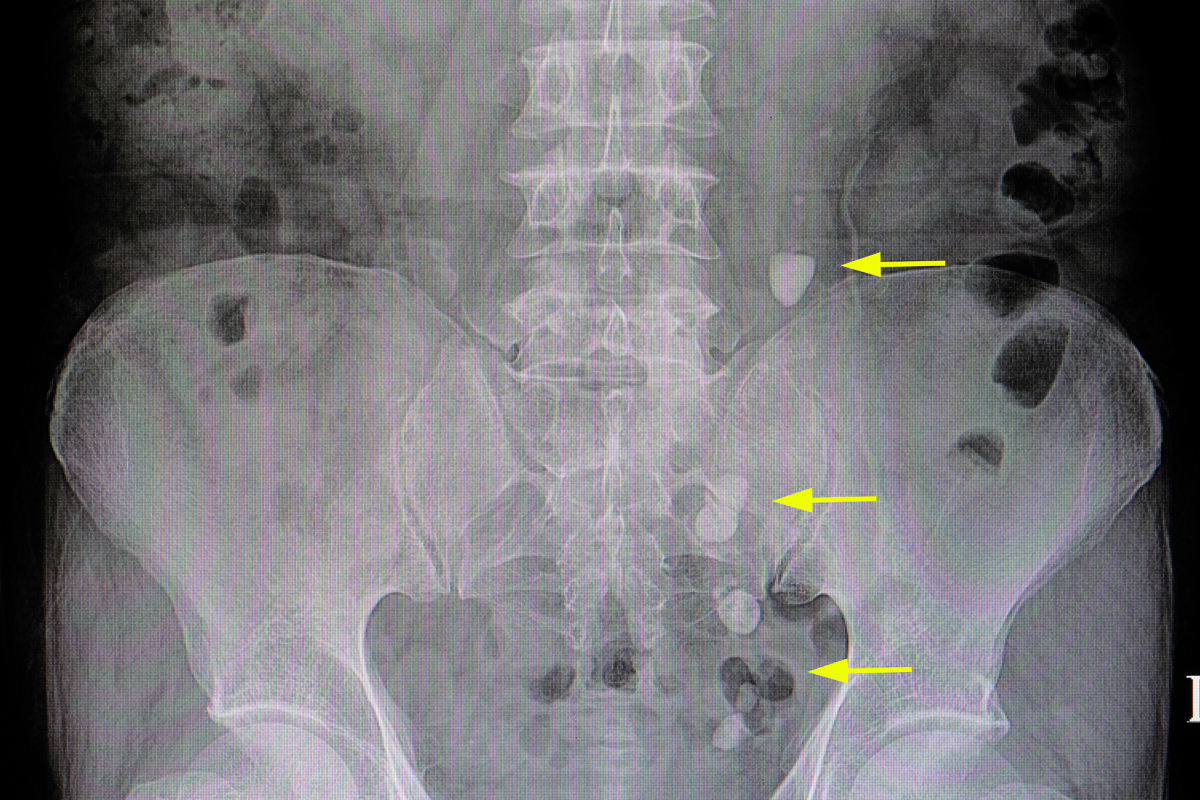Table of Contents
Kidney stones often cause no pain while they are in the kidneys.
However, they can cause sudden, severe pain as they travel from the kidneys to the bladder. Each person who has symptoms of kidney stones should call the doctor right away. You have to watch for severe pain in your side, belly, or groin, or for pink or red urine. Some patients also reported feeling sick to their stomach or nausea, and may vomit as well. However, the most commonly symptom that kidney stones are causing is a sudden and constant pain . Stones may cause intense pain in the back, side, abdomen, groin, or even genitals. People who have had a kidney stone often describe the pain as the worst pain they have ever had. Another common symptom is blood in the urine, which can occur either while stones are in the kidney or they are traveling through the ureters. Frequent and painful urination may occur when the stone is in the ureter. or after the stone has left the bladder. Fever, loss of appetite, diarrhea or constipation, excessive sweating and fatigue are also symptoms of kidney stones. However, painful urination may also be the sign of an urinary tract infection. Other conditions with similar symptoms to kidney stones include appendicitis, hernias, ectopic pregnancy, and prostatitis.
How to diagnose kidney stones
It may happen that you find out you have kidney stones only after you have visited your doctor or even in an emergency room. Most of the patients diagnosed with kidney stones found it out when they went there with pain in their belly or side. If the doctor suspects you have kidney stones, he will ask questions about the pain and your lifestyle. He or she will examine you and may do some imaging tests such as X-ray. It is a common diagnostic method for checking your kidneys and urinary tract. You may need more tests if you have more than one stone. The same goes for those who have a family history of stones. To find out the type of stones you have, the doctor may order a blood test. After that he might ask you to collect your urine for 24 hours. This can help him find out if you are likely to have more kidney stones in the future.
How are kidney stones treated?
If the doctor thinks the stone can pass without help and patient feels he or she can deal with the pain, doctor may suggest home treatment. For most stones, the doctor will

If the stone is too large to pass on its own, or if it is stuck in the urinary tract, you may need some other treatment. This happens in one or two out of ten people with kidney stones diagnosis only. The most common medical treatment is the extracorporeal shock wave lithotripsy or ESWL. This is a method in which kidney stones are broken into small pieces by using the sound waves, making them easier to pass out of the body in urine. Other times, a doctor will need to remove the stone or place a small metal tube in the ureter. It is the best choice to keep it open while kidney stones pass. If patient complains that the pain is too severe, the stones are blocking the urinary tract, or there is an infection as well, the doctor will probably suggest the following procedure. The doctors first pass a very thin telescope tube called ureteroscope up the urinary tract. It is used to point this to the stone’s location. Then they use instruments to remove the stone or break it up for easier removal. Occasionally, you may need a small hollow tube or ureteral stent placed in the ureter to keep it open and drain urine and any stone pieces. Ureteroscopy is common for stones that have moved from the kidney to the ureter. Open surgery is a procedure where the surgeon makes a cut in the side of the stomach to reach the kidneys and remove the stone. This treatment is rarely used.

